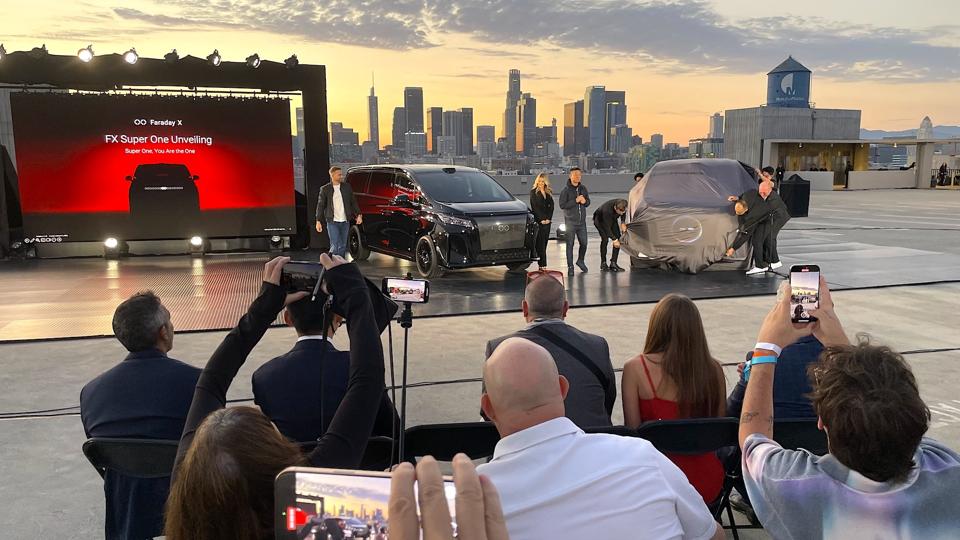Los Angeles-based EV startup Faraday Future has unveiled its latest model, the FX Super One. While pricing hasn’t been officially announced yet, the company states that it’s aiming for a starting price well below $100,000.
FX, short for Faraday X, is a sub-brand representing its more affordable and mass-market portfolio. Here, the flagship Super One is marketed as a luxury MPV—or, multi-purpose vehicle, considered a compact van by American vehicle standards—with what the company says delivers twice the performance at half the price. In terms of horsepower, charging time, battery size, and other key specifics, these are not available at this time. However, both conventional BEV and hybrid range extender-equipped powertrains will be in the mix.
Four-, six-, and seven-seat variants are planned, with each capturing potential customers’ attention accordingly. The four-seat GOAT Edition (as in, greatest of all time) is geared towards those who fancy themselves celebrities, influencers, and the like, whereas the Seven-Seat (no buzzword name for that one) is optimized for families.
I was in attendance at the Super One’s official unveiling, and by all accounts, FF is going after the demographic that’s cross-shopping other luxury hauler fare. In particular, the Cadillac Escalade—upon first glance it’s an odd comparison, but it makes more sense when you think about the Caddy’s (and other GM SUVs’) popularity in black car service. Factor in FF focusing on luxury in its Super One, part of its twice the performance for half the price mantra, and the shoe certainly fits. As Mike Floyd of Motor Trend points out, “…the Super One’s a riff on a segment that’s hugely popular in China: the executive-style van.” However, it could be quite tough convincing heavily SUV-centric American buyers that an EV van is a cooler, stylish, and equally (or more) luxurious option.
But before the particularly fun bit gets buried any further: The company’s unveiled its AI-integrated optional face. That’s right, the Super One’s grille can contain a massive LED screen dubbed its F.A.C.E., or, Front AI Communication Ecosystem. While parked, because it wouldn’t jibe with US Dept. of Transportation laws while in-motion, the front screen could be customized for a myriad of uses. As myself and other journalists witnessed in FF’s presentation, it could display a fireplace while camping. Wholesome, right? Or, have it promote music, art, small business, the sky’s the limit.
Consumers may find this to be a bit of a cheesy gag, but it’ll be interesting to see if future buyers have legitimate lightbulb moments and make fascinating use of it. Call me an optimist. Of course, on the flip side, peoples’ scruples may go out the window and we might witness some rather bizarre usage. Only time will tell, and equally bizarre memes will undoubtedly follow suit.
FF is shooting for units to go on sale as early as 2026. It also shared that, besides building a production facility in the United Arab Emirates, it’s also planning on production at its Hanford, California factory, located in the state’s Central Valley. It says that 50 percent of parts will be locally sourced, thus skirting tariff costs, though, this plant has had its fare share of delays and setbacks. The whole company has had its fair share, too; in its eleven-year run just 16 of its FF 91 have sold, to date. If the company can raise enough funding, garner enough interest, confirm solid specs, out-luxury the competition for less money and truly come up with something compelling, the tides may finally turn for it. Finally.

